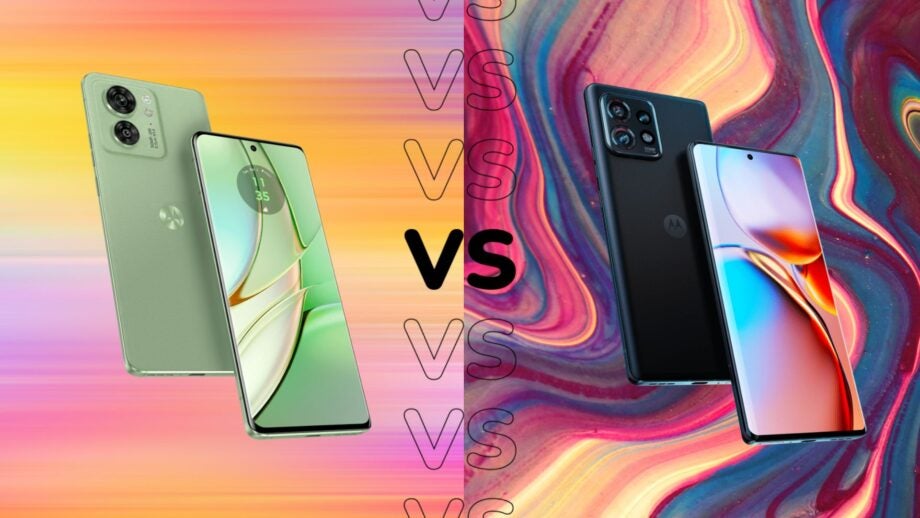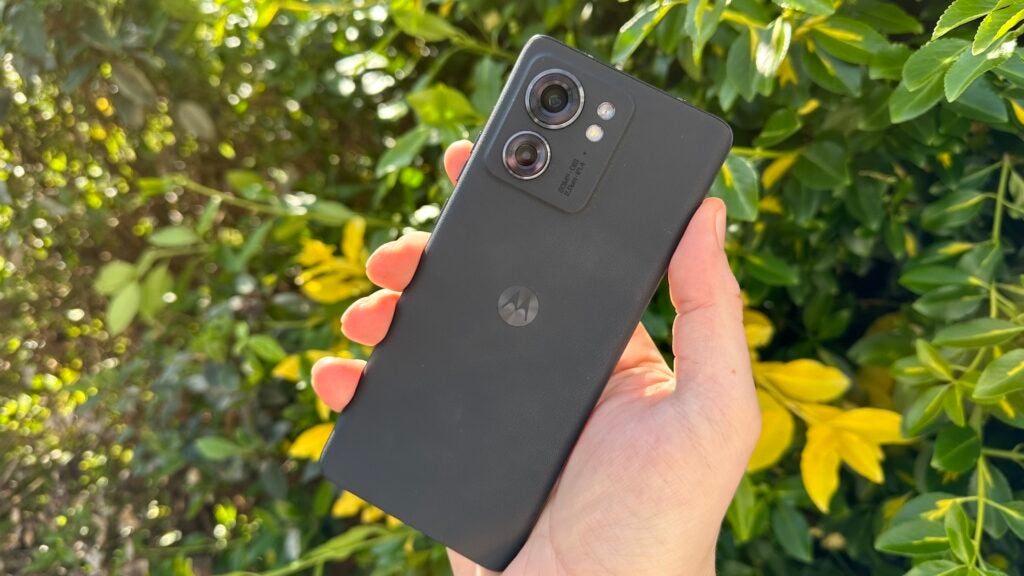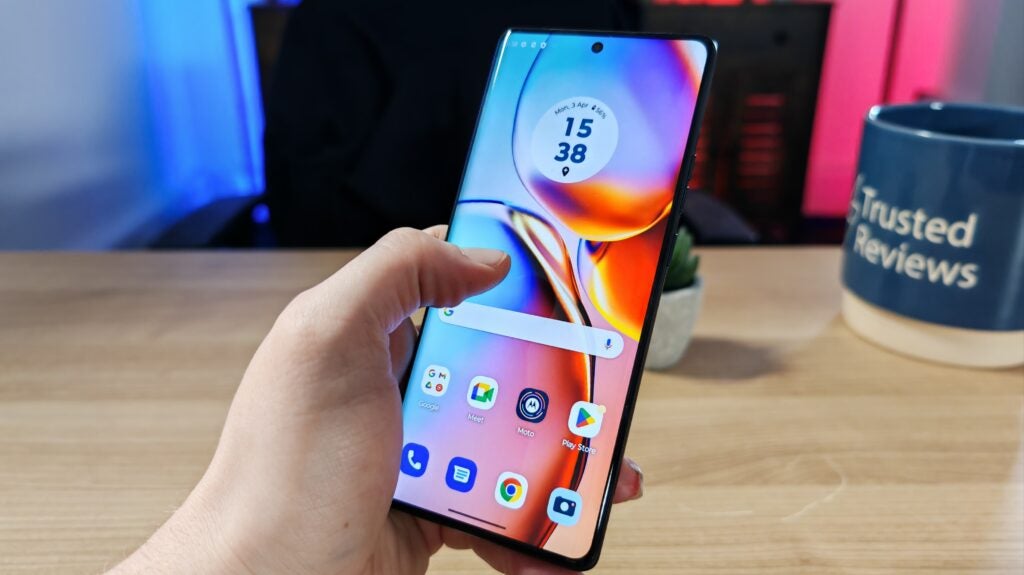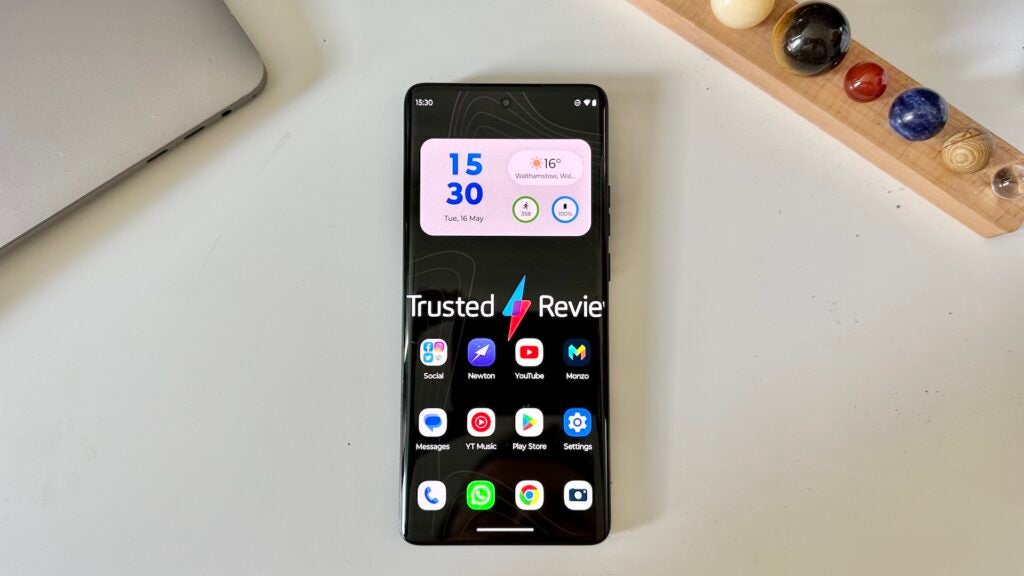Motorola Edge 40 vs Edge 40 Pro: What’s the difference?

The Motorola Edge 40 and the Motorola Edge 40 Pro are the latest smartphones in Motorola’s expanding collection, but what’s the difference between them?
There’s more to it than one being a mid-ranger and one being a flagship, with the smartphones sharing many similarities and a key few differences – including some you might not expect, like the cheaper Edge 40 having the more capable main camera.
With that in mind, here are five key differences between the Motorola Edge 40 and the Motorola Edge 40 Pro to help you decide which is best for your needs.
The Motorola Edge 40 has the better design
The Motorola Edge 40 Pro’s design is fine, if a little bit boring, sporting the usual combination of aluminium and glass as much of the competition, and it’s available in rather muted tones of Interstellar Black and Lunar Blue.
In comparison to the regular Edge 40, the Pro model looks surprisingly dated. That’s because the regular Edge 40 does a lot to stand out from the competition; it’s impressively thin and lightweight at 7.6mm and 167g respectively, and that was instantly noticeable upon picking the smartphone up. It’s just so nice and easy to use despite a fairly large 6.55-inch display.

It’s not just that it’s thinner and lighter than its premium sibling either; it’s available in a vegan leather finish that not only adds extra grip and removes the issue of fingerprints as with its premium sibling, but the finish completely covers the camera housing with small cutouts for the lenses, giving it a unique look in the wider smartphone market.
It’s also available in much more attractive colour options including Nebula Green, Lunar Blue and Eclipse Black.
The Edge 40 Pro has a faster Snapdragon chipset
With the Edge 40 Pro currently sitting pretty at the top of Motorola’s 2023 roster, it shouldn’t come as much of a surprise that the smartphone comes packing Qualcomm’s top-end Snapdragon 8 Gen 2 chipset coupled with a healthy 12GB of RAM and either 256- or 512GB of speedy UFS 4.0 storage.
While we’ve not published benchmark results for the Edge 40 Pro just yet, we’re confident of its flagship-level performance based on a range of Snapdragon 8 Gen 2-equipped smartphones we’ve used in 2023 including the OnePlus 11 and Xiaomi 13 Pro.
The Motorola Edge 40, on the other hand, has opted for a chipset from Qualcomm’s main competitor, MediaTek. More specifically, the mid-ranger sports the MediaTek Dimensity 8020 coupled with 8GB of RAM and 128- or 256GB of slightly slower UFS 3.1 storage.
Still, it’s a fairly capable mid-range chipset that we found to be fairly snappy in everyday use, though its slimline design meant that it was prone to overheating when playing demanding 3D titles.
So, if performance is important to you, the Edge 40 Pro has the upper hand here.

The Motorola Edge 40’s main camera is faster and wider
The Motorola Edge 40 may not be the top-end smartphone from Motorola, but the main 50MP snapper is unique not only in Motorola’s range but the smartphone at large with one of the widest apertures around at an impressive f/1.4 – for context, the flagship Edge 40 Pro has an f/1.8 aperture.
The wider aperture not only delivers a marked improvement in low-light photography but we found it’d deliver a more natural bokeh on photos when Portrait mode isn’t active, making for a capable main lens. In fact, it shares the same 50MP resolution, 1/1.55in sensor, OIS and multi-directional PDAF as the Edge 40 Pro, making it the more capable lens of the two overall.
However, where the Edge 40 Pro shines is with its accompanying rear lenses; while the Edge 40 only sports a 13MP ultrawide lens, the Pro model sports a higher-res 50MP ultrawide and a 12MP telephoto lens with 2x zoom. So, it’s a bit of a toss-up; you’ll get a better main camera from the Edge 40 but better shooting capabilities from the Pro model.
The Edge 40 Pro has speedy 125W charging
The Motorola Edge 40 charges at a rather respectable 68W that we found regained 49% charge in 15 minutes and a full charge in 44 minutes – but it’s almost half of the charge speed available with its Pro sibling.
That’s because the Motorola Edge 40 Pro has 125W fast charging capabilities that Motorola claims can provide 50% charge in just 6 minutes. Though we’ve not yet benchmarked the Pro model, we have used 125W charging on the Xiaomi 13 Pro and, with a slightly smaller battery than Xiaomi’s flagship at 4600mAh, I’d expect it to be slightly speedier than the 5000mAh Xiaomi 13 Pro’s full charge in 24 minutes.
The good news is that, regardless of which option you go for, the fast charger comes in the box.

The Edge 40 is much more budget-friendly
To be fair to Motorola, the Edge 40 Pro is well priced considering its spec, with the entry-level 256GB model coming in at £799/€899, but that’s also true of the mid-range Motorola Edge 40 that starts at a rather tempting £529 – a bit of a surprise given its 144Hz 6.55-inch OLED display, capable camera setup and fast charging.
If you’re tempted, you can buy both the Motorola Edge 40 Pro and Motorola Edge 40 in the UK and Europe right now, though those in the US are seemingly out of luck for now.


